
What is in a name? | abrupt climate change | climate chaos | sources | new ideas | evidence | solutions
![]()
Just a simple atom number C12 or C14.
The carbon atom maintains a delicate balance on Earth
CO2 as the element carbon dioxide absorbs radiation it moves more rapidly and we experience that motion as thermal or infrared radiation–called heat. To a some degree, methane, nitrous oxide and water vapor also retain and re-radiate heat, they don ont remain active as long in the air and for examle CH4 methane degrades to carbon dioxide after a decade.
These three atoms form a compound that absorbs ultraviolet radiation and returns long wave radiation to the atmosphere where a rise in temperature occurs.
How does the atmosphere insulate the Earth?
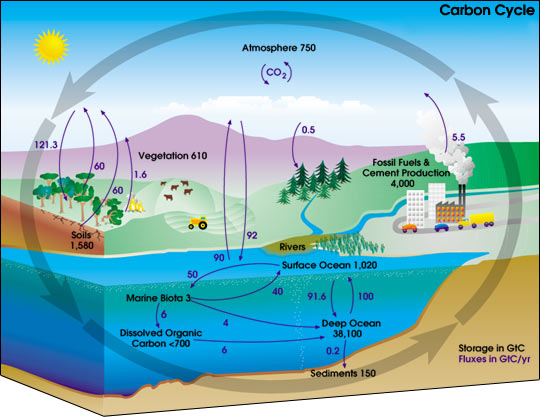
 What is the evidence that there is a problem
with carbon dioxide?
What is the evidence that there is a problem
with carbon dioxide?
The ice core from the Antarctic is from over a 400,000 year period.
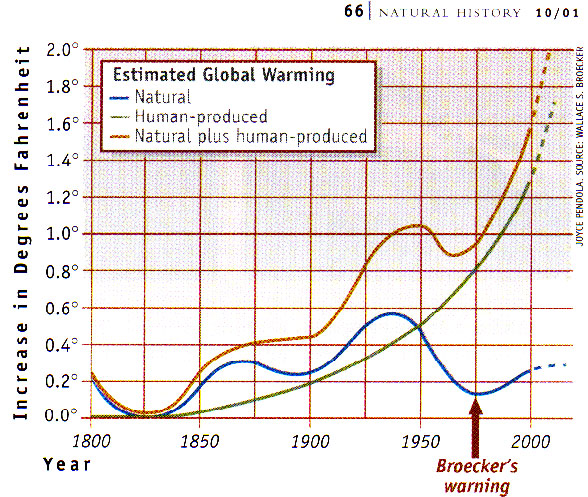
Why is warming not a natural cycle?
“We have built a greenhouse, a human creation,
where once there bloomed a sweet and wild garden.”
"The near future ….We have killed off nature—that world entirely
independent of us which was here before we arrived & which encircled and
supported our human society.”
p. 96.
 • What is causing the retreat of glaciers,
the melting of permafrost, and the retreat of mountain ice, like here in Mount
Kilimanjaro, on the Kenya and Tanzania borders?
• What is causing the retreat of glaciers,
the melting of permafrost, and the retreat of mountain ice, like here in Mount
Kilimanjaro, on the Kenya and Tanzania borders?
• Is it the same cause as a two (2) degree Celsius rise in Indian Ocean temperatures off of Kenya in the past century and, if so, what happens to water as it warms?
It retains more carbon dioxide and less oxygen to a thrshold of saturation, or turning point.
What is in a name? | abrupt climate change | climate chaos | sources | new ideas | evidence | solution
Fossil fuels have converted tons of carbon into vapor gas in the air in a little over 75 years.
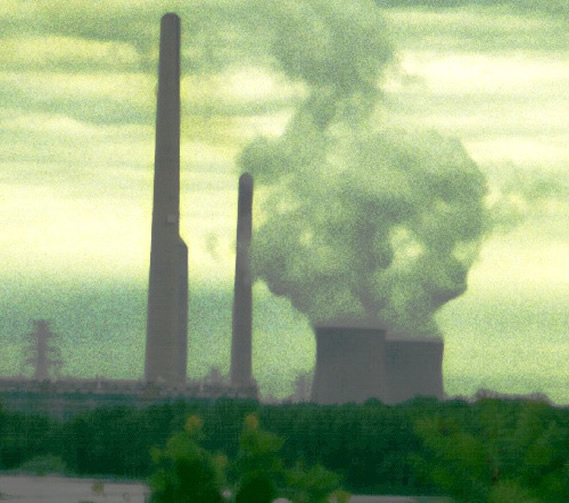
Ohio River, coal burning (fueled) electrical power plant; electrical power generation requires water for steam and to cool down the heated water before it returns to the river. Water for municipal or agricultural and industrial uses needs to be pumped and electrical pumps largely move water into and out of our homes, factories and buildings. Water and electricity go together hand in hand.
What is in a name? | abrupt climate change | climate chaos | sources | new ideas | evidence | solutions
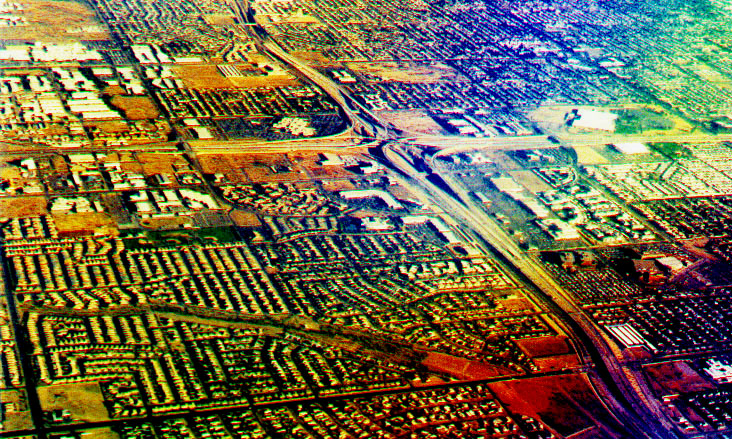
Transportation is the major source of carbon monoxide and nitrous oxide, gases that retain short wave and reradiate long wave radiation, thus contributing to global warming. Phoenix, pictured here is typical of the new suburban, cityscape of the 20th century where public investment in highways and interstate freeways have --to some degree-- made the US the largest per capita consumer of energy in the world. If even ten percent of the homes in this photograph had solar electric roofs, the second family car for errands could be electric and it could be recharged by the sunlight that often falls on Phoenix, one of the fastest growing cities, after s Vegas, in America..
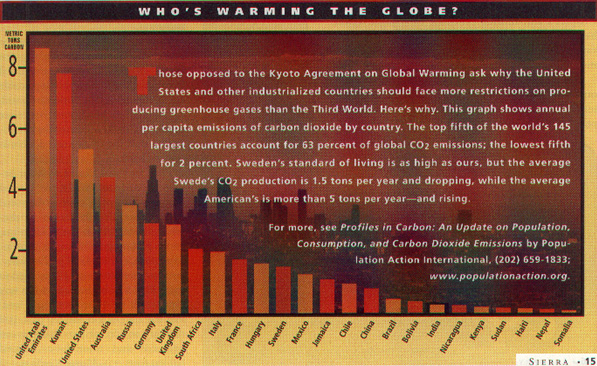 The world's leading nations who contribute to global warming
ranked on a per capita basis with respect to the tons per person of carbon dioxide
emitted per year.
The world's leading nations who contribute to global warming
ranked on a per capita basis with respect to the tons per person of carbon dioxide
emitted per year.
What is in a name? | abrupt climate change | climate chaos | sources | new ideas | evidence | solutions
How significant is the two percent / annum rise in carbon dioxide per year that is propelling global warming?
Global warming protest in Bonn, Germany, 2002.
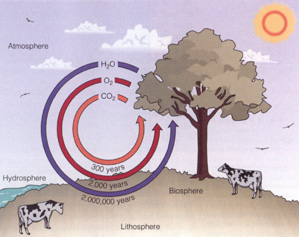 Evidence from the Vostok ice core, Antarctica reveals that "present day atmospheric
burdens of carbon dioxide and methane seem to have been unprecedented during
the past 420,000 years."
Evidence from the Vostok ice core, Antarctica reveals that "present day atmospheric
burdens of carbon dioxide and methane seem to have been unprecedented during
the past 420,000 years."
The real crux of the problem is:
What is in a name? | abrupt climate change | climate chaos | sources | new ideas | evidence | solutions
National Geographic calls it global warming.
Bill McKibben | Archer | Schmidt | Spencer Weart | Gale Christianson | James Hansen
Pacey | Organizing the study of Technology | Timeline
